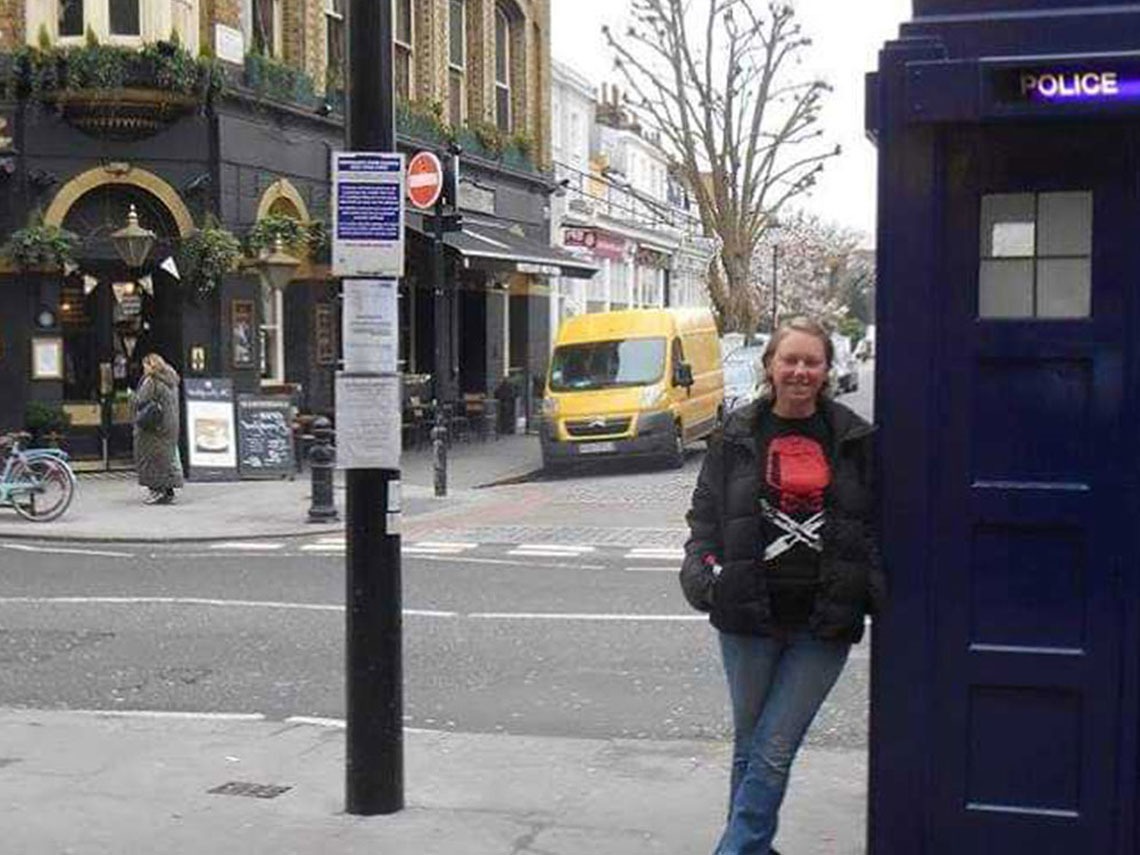Professor Who: Building Emotional Connections Into Course Design
Intentionally building emotional connections into course design will help online students get excited and engaged.

Krys Ziska Strange is pictured above with the TARDIS, the time machine/spacecraft featured in the British science fiction show Doctor Who, which she visited at Earl Court Station in London on her honeymoon in 2016.
---
I have the very unique pleasure of teaching a course about the British sci-fi television show Doctor Who. In the course, we explore what the show tells us about various aspects of the human condition, and how this can impact our view of our own human condition. Pretty cool, right?
I spent months designing the course, incorporating just the right episodes, finding readings to make students think about popular culture as a larger construct, and working with “experts” in the classic episodes to make sure all 50 years were well represented. It was a well-designed, beautiful course.
So why was I getting the feeling that students weren’t having as much fun with the content as I had hoped?
By a few weeks in, it was obvious: they were going through the motions (and doing a good job of it) but there wasn’t really any excitement. But why? The people who take courses like mine are typically those superfans you see at the various comic-cons walking around in costume and attending hour long lectures on things like the physics of time travel. Why weren’t my students more interested in the class?
I realized that while my students felt emotionally connected with the show, they weren’t being allowed to express their emotions in the course. I asked them dry questions, gave them dry readings, and avoided any discussion questions that could potentially lead to an argument or brash statements. In my fear of having students arguing and hurting feelings, I completely sucked everything out of my class that could allow my students to be the passionate, emotional, Doctor Who-loving human beings they are.
So, how can we get our online students excited and engaged? One of the first things you can do is allow your students to see you as a passionate, emotional, engaged human being. Be yourself in your videos and try to be energetic, enthusiastic and optimistic. Share bits of yourself through stories and personal examples surrounding the content. Most importantly, let them see your face. It can be so easy to turn off that webcam because it is embarrassing to see yourself on screen, but it is incredibly difficult for your students to feel connected to a disembodied voice and a screencast!
Another great way to infuse emotion into the course is to incorporate video and/or music. Consider including a video where an author is talking about writing the literature the students are reading, or a video of a first-hand account of an event. You could incorporate an interview with someone who works with the concept and is passionate about it, or, find a song that covers the topic and have students read and listen.
Finally, work to make activities valuable. This doesn’t mean add points to it or make the weight of that category heavier than before. It means give your students some flexibility with the assignments, such as giving them a choice as to how they demonstrate their learning, or a choice of topic, or even giving them a voice in the way they will be assessed. This also will help students understand the relevance of what they are learning. How does this tie to their “real world” lives? How can it inform the choices that they will need to make and the lives they will live now and in the future?
In the end, I opted to add a lot of different things to my course. My students had special informal videos called “Sunday Coffee with Krys” where I would record a short video as I drank my morning coffee talking about the week ahead and the week we just finished and how they tie together. I moved from a discussion board that asked them to link concepts to ones that asked them to make decisions and take sides. I started using technology that encouraged them to use their own voices and webcams to record responses. I gave them the freedom to design their own midterm that shows what they have learned and lets them have the freedom to center it around their favorite Doctor and favorite episodes.
Not only did my students get to be more emotionally engaged with the content, but I was able to become more emotionally engaged with them. For the first time in years of teaching online, I felt connected to my students and felt like I really got to know them. They also got to learn how to become engaged in an online scholarly community and to practice the skills that are necessary to be the global citizens we will need. It was an absolute win all around and has become my model for all of my personal course designs.


